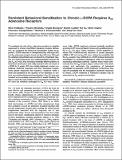Por favor, use este identificador para citar o enlazar a este item:
http://hdl.handle.net/10261/158532COMPARTIR / EXPORTAR:
 SHARE SHARE
 CORE
BASE CORE
BASE
|
|
| Visualizar otros formatos: MARC | Dublin Core | RDF | ORE | MODS | METS | DIDL | DATACITE | |

| Campo DC | Valor | Lengua/Idioma |
|---|---|---|
| dc.contributor.author | Fredduzzi, S. | - |
| dc.contributor.author | Moratalla, Rosario | - |
| dc.contributor.author | Monopoli, A. | - |
| dc.contributor.author | Cuéllar, Beatriz | - |
| dc.contributor.author | Xu, K. | - |
| dc.contributor.author | Ongini, E. | - |
| dc.contributor.author | Impagnatiello, F. | - |
| dc.contributor.author | Schwarzschild, M.A. | - |
| dc.contributor.author | Chen, J.-F. | - |
| dc.date.accessioned | 2017-12-22T12:31:10Z | - |
| dc.date.available | 2017-12-22T12:31:10Z | - |
| dc.date.issued | 2002 | - |
| dc.identifier.citation | Journal of Neuroscience 22: 1054- 1062 (2002) | - |
| dc.identifier.issn | 0270-6474 | - |
| dc.identifier.uri | http://hdl.handle.net/10261/158532 | - |
| dc.description.abstract | To investigate the role of A2A adenosine receptors in adaptive responses to chronic intermittent dopamine receptor stimulation, we compared the behavioral sensitization elicited by repeated L-DOPA treatment in hemiparkinsonian wild-type (WT) and A2A adenosine receptor knock-out (A2A KO) mice. Although the unilateral nigrostriatal lesion produced by intrastriatal injection of 6-hydroxydopamine was indistinguishable between WT and A2A KO mice, they developed strikingly different patterns of behavioral sensitization after daily treatment with low doses of L-DOPA for 3 weeks. WT mice initially displayed modest contralateral rotational responses and then developed progressively greater responses that reached a maximum within 1 week and persisted for the duration of the treatment. In contrast, any rotational behavioral sensitization in A2A KO mice was transient and completely reversed within 2 weeks. Similarly, the time to reach the peak rotation was progressively shortened in WT mice but remained unchanged in A2A KO mice. Furthermore, daily L-DOPA treatment produced gradually sensitized grooming in WT mice but failed to induce any sensitized grooming in A2A KO mice. Finally, repeated L-DOPA treatment reversed the 6-OHDA-induced reduction of striatal dynorphin mRNA in WT but not A2A KO mice, raising the possibility that the A2A receptor may contribute to L-DOPA-induced behavioral sensitization by facilitating adaptations within the dynorphin-expressing striatonigral pathway. Together these results demonstrate that the A2A receptor plays a critical role in the development and particularly the persistence of behavioral sensitization to repeated L-DOPA treatment. Furthermore, they raise the possibility that the maladaptive dyskinetic responses to chronic L-DOPA treatment in Parkinson's disease may be attenuated by A2A receptor inactivation. | - |
| dc.publisher | Society for Neuroscience | - |
| dc.rights | openAccess | - |
| dc.subject | dynorphin | - |
| dc.subject | dyskinesia | - |
| dc.subject | Parkinson's disease | - |
| dc.subject | Behavioral sensitization | - |
| dc.subject | l-DOPA | - |
| dc.subject | A2A adenosine receptor | - |
| dc.title | Persistent behavioral sensitization to chronic L-DOPA requires A2A adenosine receptors | - |
| dc.type | artículo | - |
| dc.identifier.doi | 10.1523/JNEUROSCI.22-03-01054.2002 | - |
| dc.date.updated | 2017-12-22T12:31:10Z | - |
| dc.description.version | Peer Reviewed | - |
| dc.language.rfc3066 | eng | - |
| dc.relation.csic | Sí | - |
| dc.identifier.pmid | 11826134 | - |
| dc.type.coar | http://purl.org/coar/resource_type/c_6501 | es_ES |
| item.fulltext | With Fulltext | - |
| item.openairecristype | http://purl.org/coar/resource_type/c_18cf | - |
| item.cerifentitytype | Publications | - |
| item.grantfulltext | open | - |
| item.openairetype | artículo | - |
| Aparece en las colecciones: | (IC) Artículos | |
Ficheros en este ítem:
| Fichero | Descripción | Tamaño | Formato | |
|---|---|---|---|---|
| Journal of neuroscience 2002.pdf | 312,71 kB | Adobe PDF |  Visualizar/Abrir |
CORE Recommender
PubMed Central
Citations
23
checked on 23-abr-2024
SCOPUSTM
Citations
129
checked on 22-abr-2024
WEB OF SCIENCETM
Citations
105
checked on 27-feb-2024
Page view(s)
276
checked on 24-abr-2024
Download(s)
283
checked on 24-abr-2024
Google ScholarTM
Check
Altmetric
Altmetric
Artículos relacionados:
NOTA: Los ítems de Digital.CSIC están protegidos por copyright, con todos los derechos reservados, a menos que se indique lo contrario.
